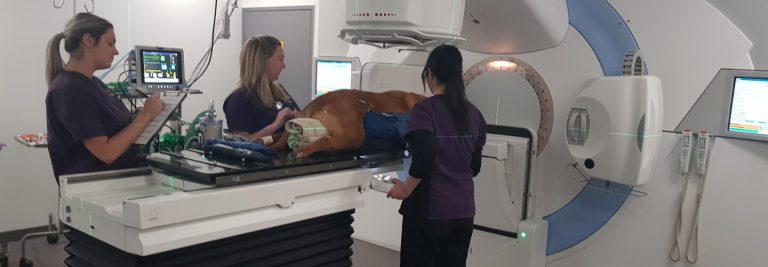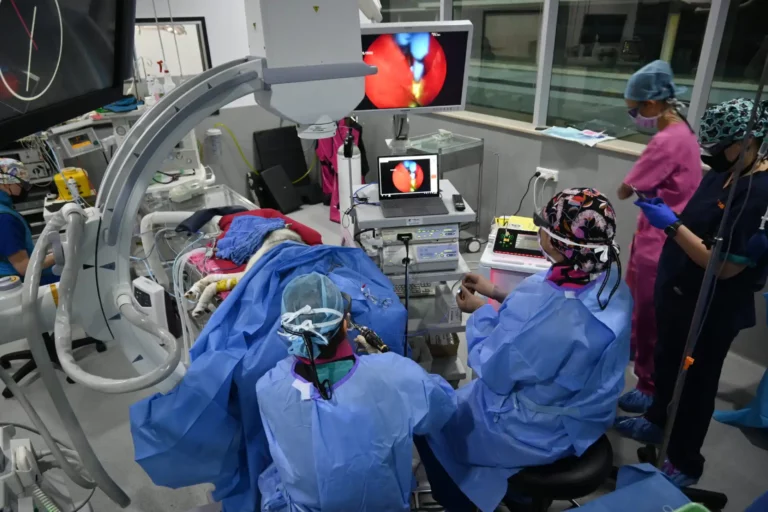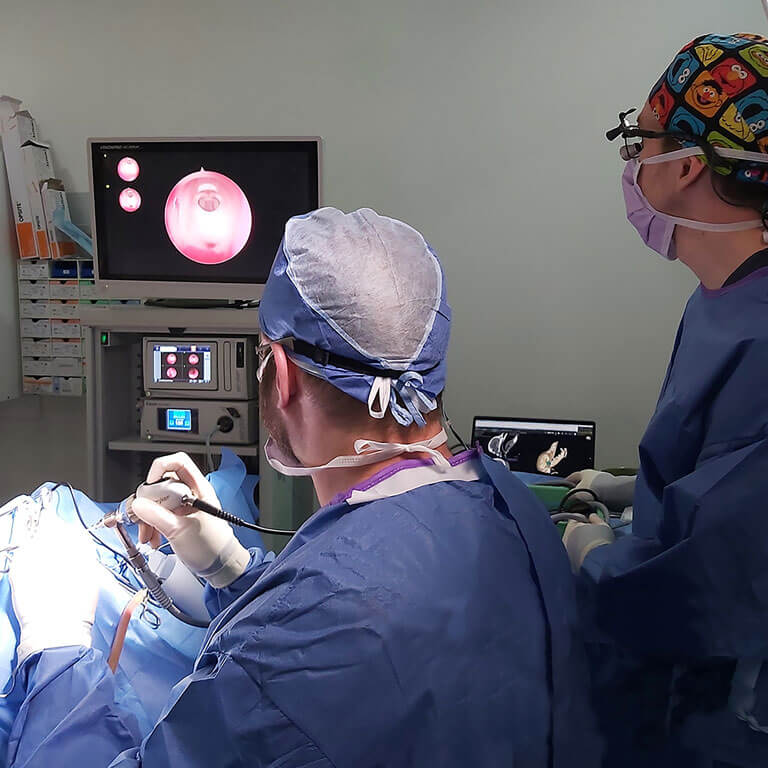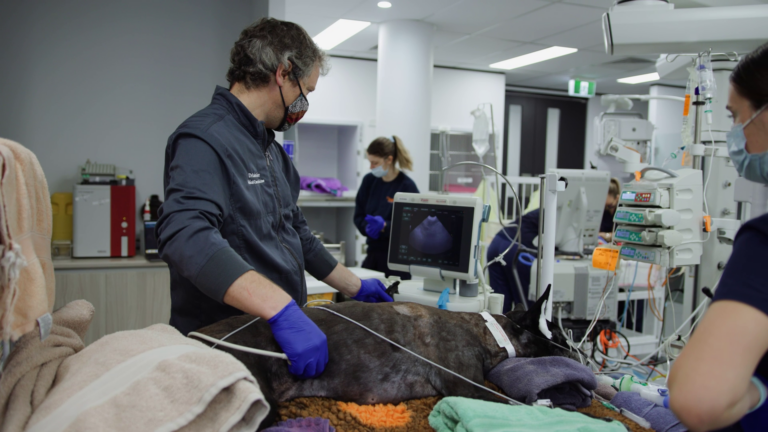What is dog hip dysplasia?
Dog hip dysplasia, also referred to as canine hip dysplasia is one of the most common joint problems found in dogs. It is a condition when the ball and socket joint of the hips do not fit together snuggly, which then leads to loss of cartilage, bone-on bone grinding, and progression of osteoarthritis.
Hip dysplasia is common in specific breeds such as rottweilers, German shepherds, corgis, golden and Labrador retrievers, English and French bulldogs, great Danes, Saint Bernards, standard poodles, Bernese mountain dogs and Mastiffs. In fact, most large and giant breeds.
What are the symptoms of dog hip dysplasia?
Initially, the dog may not show symptoms. However, over time as the condition progresses, hip dysplasia can become quite painful, causes limping and mobility issues such as difficulty getting up and jumping. These can significantly reduce the dog’s quality of life.
The condition can become apparent soon after birth, during growth, with the conditional worsening as the dog becomes lager.
How is dog hip dysplasia diagnosed?
Dog hip dysplasia can be indicated by a veterinarian through performing a physical exam, which can find evidence of the condition. However, specific X-rays techniques, commonly referred to as “hip scoring” is the most useful. The PennHIP method of hip scoring is regarded as the most useful. However, there are also some older methods that may be of some help.
If you have a puppy, speak to your local vet about PennHIP or distraction radiographs. At 16 weeks, this is where dogs are in the prime of their developmental structure of their hips. For some dogs with hip dysplasia there are options to perform a minimally invasive procedure under general anaesthesia called Juvenile Pubic Symphysiodesis (JPS) where a small cut is made to assist with the development of the pelvis and prevent osteoarthritis Testing can be performed when the puppy is young
How can dog hip dysplasia be prevented?
Due to the genetic nature of the condition, hip dysplasia is hereditary. If you are looking for a puppy of a breed that is at risk of hip dysplasia, ask your breeder if have performed hip scoring on the parents.
It is also important for dogs suspected to have hip dysplasia to remain slim, with a limited amount of high impact exercise. Both these can help reduce some of the symptoms seen with hip dysplasia.
Regardless of pedigree, it is always recommended for large breed puppies to be fed diets appropriate for large breed puppies. Commercial large breed puppy diets are designed to have reduced levels of energy, protein, and minerals compared to other formulations. This helps to slow the growth and weight gain of puppies, which can also reduce odds of compounding the condition. For more advice on puppy feeding, consult your local veterinarian.
How is dog hip dysplasia treated?
SASH is fortunate to be a multidisciplinary hospital with multiple types of specialists. Consequently, a variety or combination of treatment options can be offered for dogs with hip displacement. Not all treatments are suitable for each patient, so it is important to have a veterinarian examine and develop a plan tailored specifically for you and your dog.
Physiotherapy
One of the less invasive ways to treat dog hip dysplasia is through physiotherapy. A Sports Medicine Veterinarian or Rehabilitation Therapist is able to provide a number of exercises, just like you would see with people, to help strengthen muscles that support the hip, and help reduce the problems associated with hip dysplasia.
More advanced forms of physiotherapy can also be used in combination, such as hydrotherapy, laser therapy, platelet rich plasma therapy (PRP), and acupuncture.
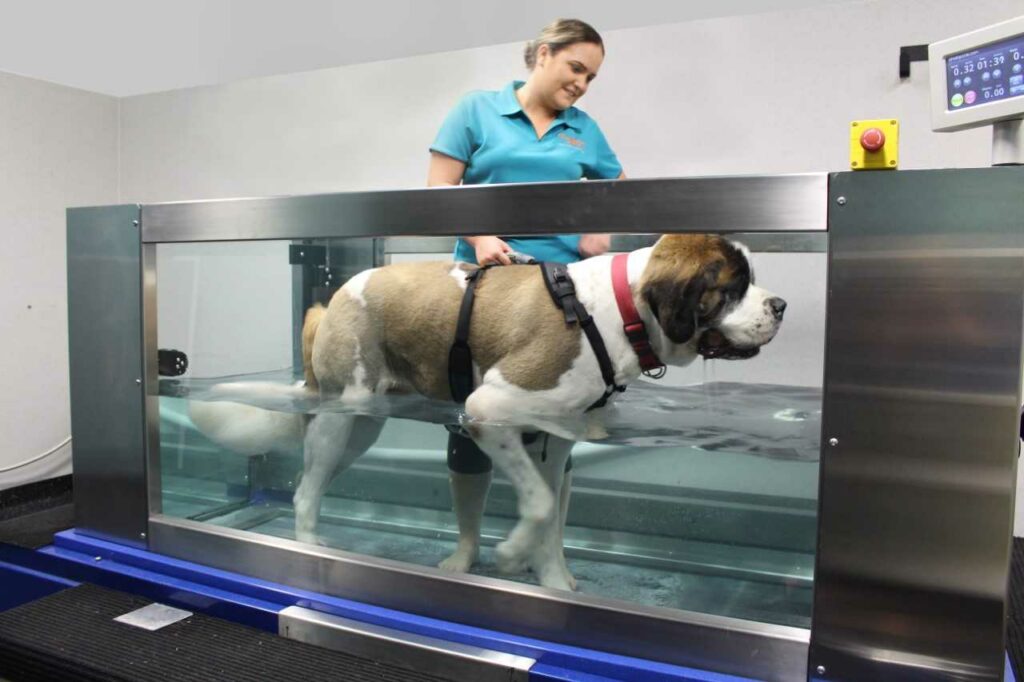
A Sports Medicine Veterinarian will be best placed to advise on the suitability of these treatment options for your dog. They will also be able to provide advice about keeping your dog slim, while also limiting high impact activities.
Medication
Non-steroidal anti-inflammatory drugs (types of “pain killers”) are the most common form of medication used to manage the pain associated with dog hip dysplasia. However, withdrawal of the drug results in return of the symptoms. Long term NSAID use carries risk of side effects, such as kidney and liver damage.
Dietary supplements such as fish oil can also be explored.
Surgery
There are multiple surgical options that can be explored for dogs with hip dysplasia. Orthopaedic surgeries such as double pelvic osteotomy (DPO) can prevent older puppies with HD from developing osteoarthritis and a total hip replacement (THR) can return severely impacted dogs to normal comfort and function.
The types of surgery performed will depend largely on the patient – age, severity of the condition, and lifestyle. A skilled surgeon, such as a SASH Surgery Specialist will be best positioned to provide recommendations, pros, and cons of each surgical option.
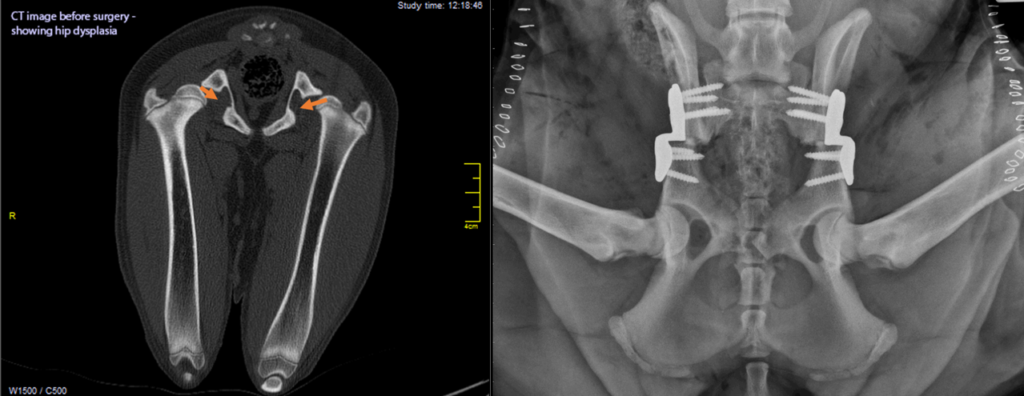
If surgery is indicated, physiotherapy and medication will also be prescribed to assist with recovery, all of which can be provided by SASH. Appropriate physiotherapy, in particular, is essential to improving surgical outcomes.
Surgery at SASH
SASH is one of the country’s leading specialist veterinary hospitals. It’s multidisciplinary team consists of Specialists in Surgery that excel at performing hip dysplasia surgeries. SASH is also one of the few multidisciplinary institutions which offer all of the following services for surgery patients:
- Specialists in Anaesthesia to oversee general anaesthesia to significantly reduce its risk
- Specialists in Diagnostic Imaging to acquire and interpret CT scans and X-rays with in-house equipment
- 24/7 veterinary oversight for recovering patients, including from Specialists in Critical Care if required
- Sports Medicine & Rehab Vets & Therapists to improve recovery and surgery outcomes
Dog hip dysplasia treatment outcomes
Regardless of which treatment option is used, the aim is to improve the quality of life for the dog. The outcomes can range from slight to dramatic improvements in mobility and pain. Outcomes can also be improved by implementing an appropriate rehab program, which can be provided by a Sports Medicine & Rehab Veterinarian. More details about expected outcomes can be provided by a SASH veterinarian after examining your dog.
